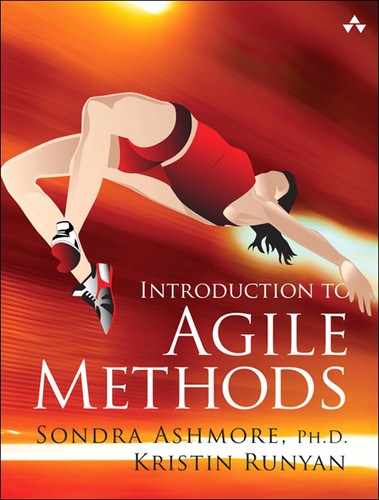Contents
Chapter 1: The History and Value of Agile Software Development
The Beginnings of Software Development as Methodology
The Rise of Agile Software Development
Interview with Robert Martin (Uncle Bob)
References and Further Reading
Chapter 2: Organizational Culture Considerations with Agile
What Is Organizational Culture, and Why Does It Matter?
References and Further Reading
Chapter 3: Understanding the Different Types of Agile
Frequent Releases, Short Development Cycles
Regular Builds, Integration Tests, and Rapid Feedback
Dynamic Systems Development Method
Implementing Tools and Techniques at Cayman Design
Interview with Alistair Cockburn
References and Further Reading
Chapter 4: Describing the Different Roles
Practical Examples of the Scrum Roles
References and Further Reading
Chapter 5: The New Way to Collect and Document Requirements
Old Form of Requirements Gathering
User Story Writing Best Practices
Additions and Considerations from the Other Methodologies
Dynamic Systems Development Method
Human–Computer Interaction (HCI) and Usability
From User Stories to Deliverables
Managing Features—Marketing/Sales versus Development
Roadmaps—Internal and External
Lean Product Development and the Minimum Viable Product (MVP)
Interview with Ellen Gottesdiener and Mary Gorman
References and Further Reading
Chapter 6: Grooming and Planning
Product Backlog (Scrum and XP)
Feature-Driven Development (FDD)
Level of Effort (LOE) or T-Shirt Sizing
Scrum: Product Backlog Grooming
Extreme Programming: XP Planning Game
Assign a Team Resource to Maintenance
References and Further Reading
Chapter 7: Testing, Quality, and Integration
Creating a Quality-Focused Culture
Test-Driven Development (Unit Testing)
Manual, Automated, and Customer Testing
References and Further Reading
Chapter 8: Tracking and Reporting
Feature-Driven Development (FDD) Parking Lots
References and Further Reading
Products beyond Software Development
Speaking to the Market with Agility
References and Further Reading
